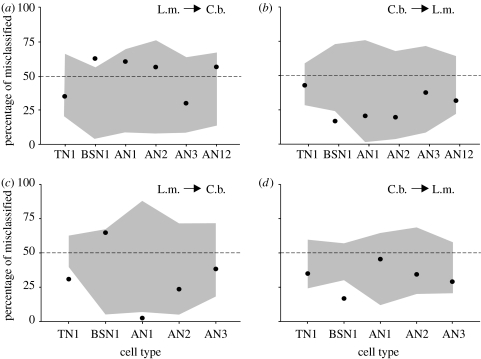Figure 5.
Misclassifications demonstrate similarities between species. (a,c) Evaluation of how many of the locusts' spike trains were incorrectly classified as stemming from C. biguttulus due to their higher similarities to the C. biguttulus templates (cf. §2) if we allowed for only two classes. Note the high proportions of wrong classifications (points), indicating that the responses of these neurons within the two species cannot be separated. Grey-shaded areas indicate the domain of uncertainty that has been determined by shuffling spike trains (see text). As a control, we also performed the shuffling procedure with 100 repetitions, but the uncertainty domains did not change. (b,d) Proportion of misclassifications of C. biguttulus spike trains as stemming from the locust. (a,b) Male song as stimulus and (c,d) female song as stimulus. For SN3, there were too few recordings (2 and 1) to include this neuron in this kind of evaluation. Only few data points outside the uncertainty range show a significant deviation from the 50 : 50 chance expectation (see text for details).

